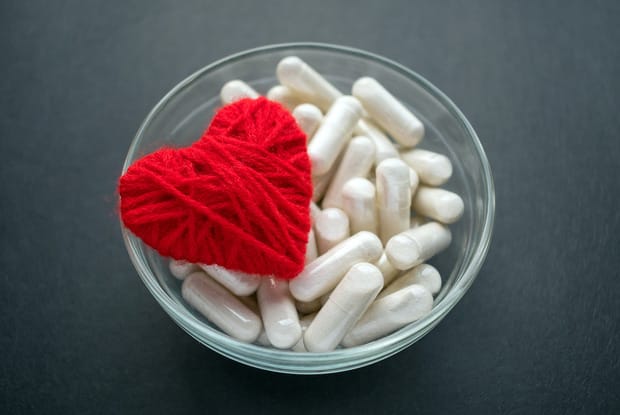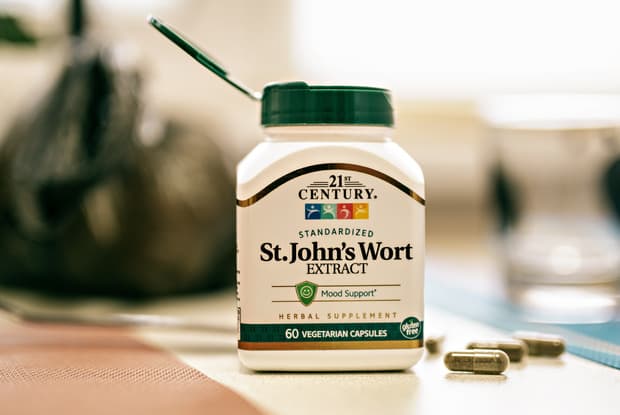Table of Contents
I. Xarelto Mechanism of Action
III. Xarelto Interactions with Supplements
Xarelto is the brand-name version of rivaroxaban, a prescription blood thinner approved to treat and prevent life-threatening blood clots. Rivaroxaban is approved for treating deep vein thrombosis (DVT) and pulmonary embolism (PE). Xarelto is also approved for preventing strokes caused by a blood clot in patients with atrial fibrillation (AFib). Additionally, Xarelto helps prevent heart attack, stroke, and death caused by blood clots in patients with coronary artery and peripheral artery disease.
Whether you order brand-name or generic Xarelto through a Canadian pharmacy, it is important to avoid drug and food interactions to ensure you get the full benefits of Xarelto. Read on to learn more about how Xarelto works and why certain substances interfere with rivaroxaban’s efficacy.

Xarelto Mechanism of Action
A blood clot forms to prevent blood loss after an injury, but a clot that occurs in the wrong place can affect organ function and block blood flow to vital parts of the body. When Xarelto enters the body, it stops the body’s natural clotting factors from working. As a result, blood clots are less likely to form. [1] As you would expect, too much rivaroxaban in your system can significantly increase the risk of bleeding. Conversely, too little Xarelto means you are still at risk of blood clots. You should avoid drug and food interactions because they make both these scenarios more likely.
Xarelto Drug Interactions
Pain relievers are a common drug interaction of Xarelto. Some pain relievers, like acetaminophen, do not cause adverse effects with rivaroxaban. But others, such as aspirin and NSAIDs, can increase your risk of excessive bleeding when taken with Xarelto. NSAIDs are nonsteroidal anti-inflammatory drugs and include ibuprofen, celecoxib, magnesium salicylate, and naproxen. Talk to your doctor before taking any medication alongside Xarelto because even cold and flu medications may contain ingredients that affect rivaroxaban’s efficacy. [2]

Your Xarelto blood thinner should not be taken with other anticoagulants. The reasoning behind this is that combining blood thinners can considerably increase your bleeding risk, so your doctor will typically prescribe only one blood thinner at a time. Inform your doctor before starting Xarelto if you are on another blood thinner like warfarin, heparin, or enoxaparin. Because new blood thinners regularly enter the market, it is important to maintain communication with your doctor to manage potential drug interactions. [3] Other common drug interactions with Xarelto include:
- Antibiotics (including clarithromycin and erythromycin)
- Antifungals (such as itraconazole and ketoconazole)
- Antivirals (like ritonavir, lopinavir, and darunavir)
- Antiseizures (including phenytoin, primidone, and carbamazepine)
- Antidepressants (such as citalopram and venlafaxine)
Ask your doctor for a list of all the known drug interactions of Xarelto. If you need to take any contraindicated drug to treat another condition, ask your doctor if it is possible to adjust your dosage to accommodate both medications.
Xarelto Interactions with Supplements
The advantage of Xarelto over traditional blood thinners like warfarin is that it does not interact with vitamin K. Since rivaroxaban is safe to take with vitamin K, you are free to eat foods like kale, broccoli, cabbage, and spinach while on this blood thinner. However, Xarelto may still interact with certain herbs and supplements. For example, Xarelto is known to interact with St. John’s wort, the extract of a star-shaped flower that is often used to improve emotional distress and mild to moderate depression. [4] Speak to your physician first if you plan on taking any over-the-counter herbs or supplements.

Xarelto Food Interactions
As mentioned above, rivaroxaban does not interact with vitamin K. Unlike warfarin, Xarelto does not work by blocking the liver’s use of vitamin K to form clots. This is a major benefit since it allows you to eat a nutritious diet without worrying about any foods affecting your blood thinner.
Certain dosage strengths of rivaroxaban actually work more effectively when taken with food. Although 10 mg of rivaroxaban works just as well with or without food, one study shows that Xarelto 20 mg is more effective when taken with a meal. [5] If you are prescribed one of the higher dosages of Xarelto, like 15 mg or 20 mg, your doctor may suggest taking your dose during the same meal each day to keep a consistent level of rivaroxaban in your body.
DISCLAIMER: The information in the article is not meant to be used for treatment or diagnosis. It is designed for general awareness and for information purposes only. Always consult a medical professional for your specific healthcare needs.
